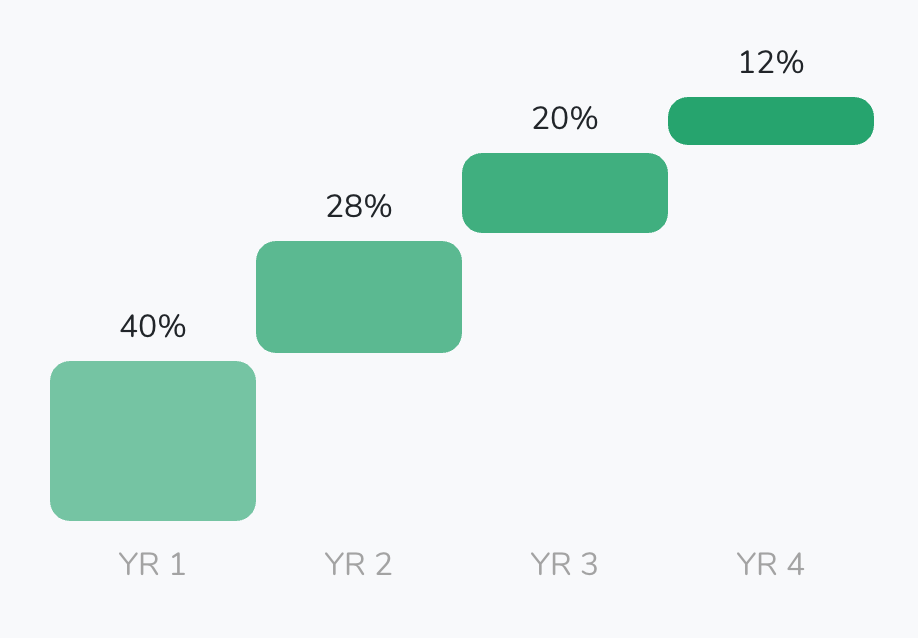Looking for more insights like this? Check out our compensation benchmarking offerings. Our premium tier includes exclusive insights on competitive compensation structures.
Several tech companies have introduced a new type of vesting schedule for employee stock compensation. The crux of it is that it’s a single year vesting schedule that vests 1/4th each quarter. Missing is the one year cliff and the traditional 4 year stock grant plan. Instead when you sign your offer, you get a stock reward amount for that year. After that year, you receive another grant for the following year. Note that the companies do provide a 'base equity grant' to employees which is a guaranteed minimum amount of stock irrespective of performance. However, any refreshers added on can fluctuate.
Pros
This model does have some pros for employees. There’s no 1 year cliff, which means you can vest in a few quarters and leave a company if you wish. Also, you’re protected from some downside risk – any declines in stock price over the years would reflect a repriced version the following year. The stock value is in essence closer to cash now.
Cons
Unfortunately, it also means that you may not be guaranteed as many shares of stock the following year. Your shares are also repriced from the start of that year, meaning you don’t capture as much growth of the company as you would with a 4 year plan locked in from the beginning at a singular price. This is the biggest downside of this vesting schedule – you lose out on larger appreciations of the stock.
To illustrate this with an example let’s say we join a company using a single year vesting schedule. Let’s assume their stock is priced at $10 / share and I get $1000 worth of stock in the first year, meaning I will get 100 shares. The next year, if the price is $20 / share at $1000 worth of stock, I will now only get 50 shares. In total over the two years, I’d have 150 shares. Whereas if I had a grant for the two years together (typically 4, using 2 for sake of example), and locked in the price at $10 in the beginning, I’d actually have a total of 200 shares!
Companies adopting the new one year equity grant:
- Coinbase
- Stripe
- Lyft
Some other companies have provided some similar structures as well. Snap has eliminated 1 year cliffs from their offers. And interestingly, Google has also introduced a much more front-loaded vesting schedule. They are now offering a 40–28–20–12 schedule (sitting in stark contrast to Amazon's back-loaded vesting schedule and although less aggressive, ByteDance's as well).

A new vesting schedule offered to Google employees
Overall, 1-year vesting schedules are a bad policy for employees at companies that are expected to be high growth. But this may be a competitive move for companies in order to allocate less stock overall for each employee up front, allowing them to hire more talent as they grow and provide performance based stock refreshes over time. Separately, the removal of the one-year cliff from the vesting schedule provides flexibility for employees to leave a company within a year without loss of all equity. As compensation within the tech industry continues to increase with the stock market bull run, we'll see how many more companies innovate on the traditional vesting schedule to accommodate for their needs.
Need help negotiating your package? Get matched with a former tech recruiter to maximize your offer. Book Now

